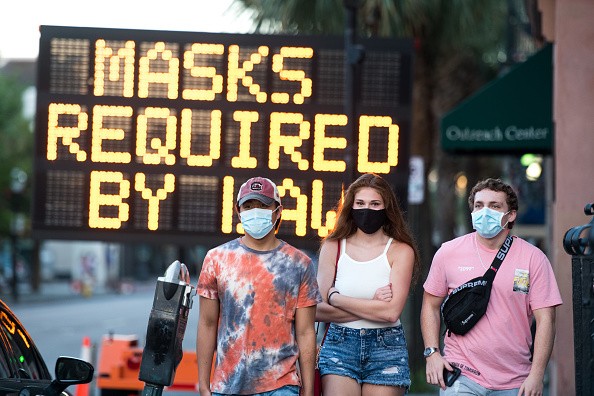CDC: Young People are Less Likely to Wear Masks
Masks have been worn at increasing rates in the U.S. since April but young people are still less likely to wear one, said a new survey by the Centers for Disease Control and Prevention (CDC).

In particular, young people with ages 18 to 29 years old were seen to have a lack of adherence to protective measures, noted the CDC.
Less masks wearing may be part of the reasons why young people are getting infected by COVID-19 at higher rates.
Overall, masks are being worn more by Americans. But other recommended safety measures haven't kept pace.
According to the nationally representative survey, U.S. adults reported 89% mask wearing in June, more than the 78% recorded in April.
As for other preventive measures like hand washing, social distancing and avoiding public places, there was no change or decline in behaviors.
Young People Struggle in Embracing Safety Measures
With the data available, it can be said that age was a strong predictor of public health behavior, said TIME.
Younger adults were also slower than older adults to embrace the behaviors related to the new normal.
The research was published in CDC's Morbidity and Mortality Weekly Report.
It analyzed more than 6,000 people through telephone and online surveys, covering a nationally representative sample of people aged above 18.
The questions to the survey were posed in three intervals-late April, early May and early June.
Respondents were asked which safety measures they engaged in regularly: mask wearing, sanitizing hands and physical distancing from non-housemates.
In that three-month interval, the youngest were the least to participate.
Just 69% of them wore masks in April, 86% did so in June and 92% reported wearing masks in June.
While there was an increasing trend, the trend is still worrisome as younger adults still landed far below respondents who are over 60.
Dr. Carlos Del Rio of Rollins School of Public Health at Emory University told NPR that the data was "encouraging."
He added that even though the data was interesting he wished they were "better-especially among younger people."
CDC Underscores Strategy for Young Adults
In the weekly report, the researchers said their data gave light to what needs to be addressed.
They said targeted messaging and behavior modification interventions were needed to encourage younger adults.
These strategies will also help the age group in maintaining such behaviors that were proven to slow the spread of COVID-19.
Dr. Amesh Adalja, senior scholar at the Johns Hopkins University Center for Health Security, said seniors' being more cautious is not surprising.
He told Yahoo Life that younger adults tend to be "most risk-tolerant" or more willing to put themselves in danger.
He added that those over 60 are likely to be better at following the rules because they are more likely to have severe infections.
"Younger individuals may feel less inclined to do so because they are at a lower risk for severe complications," he said.
He noted that the risks for younger Americans are not zero.
CDC recently found that young people make up 20% of new COVID-19 cases from June to August, the highest of any age group.
JAMA Internal Medicine also found that infections among this age group also make up 21% of intensive care cases and nearly 3% die.
Check these out:
Universal Mask Wearing Could Save 130,000 Lives by February
Heart Damage Among COVID-19 Patients Lead to Higher Risk for Death, Study Finds
COVID-19 Study: Immunity From Antibodies Could Wear off Over Time
Subscribe to Latin Post!
Sign up for our free newsletter for the Latest coverage!
© 2025 Latin Post. All rights reserved. Do not reproduce without permission.















